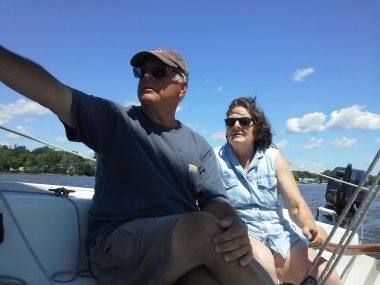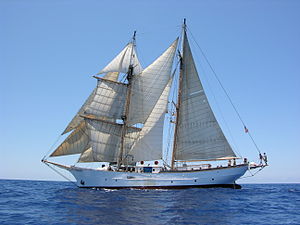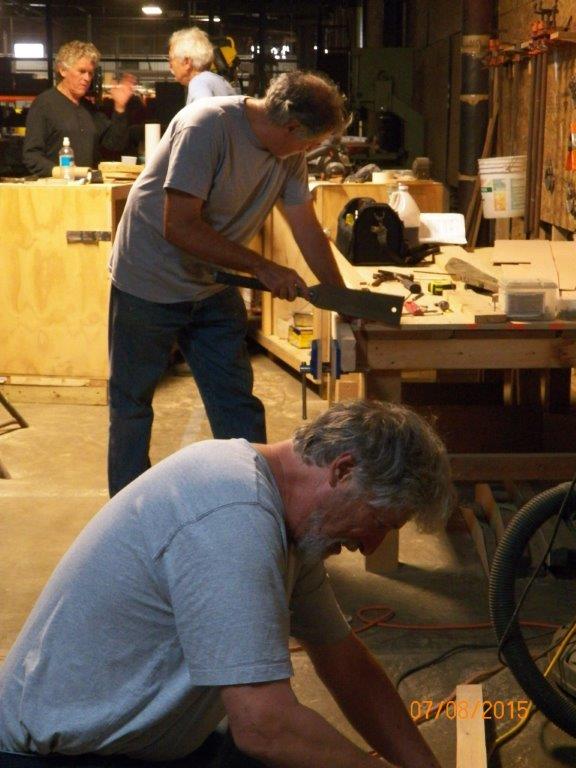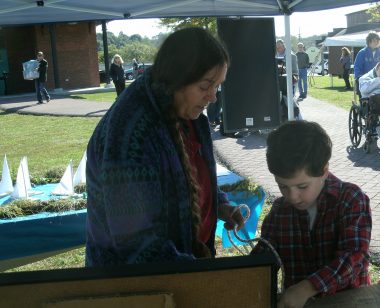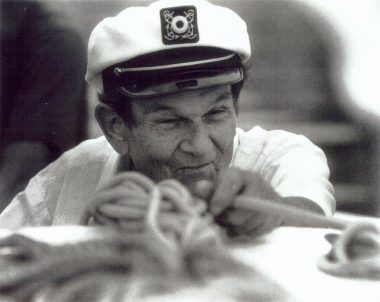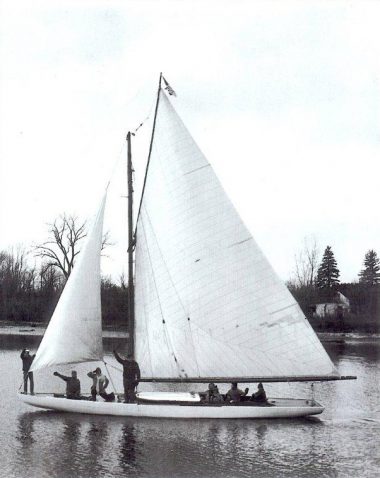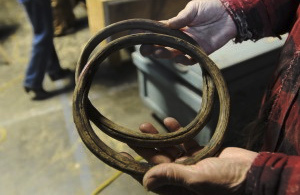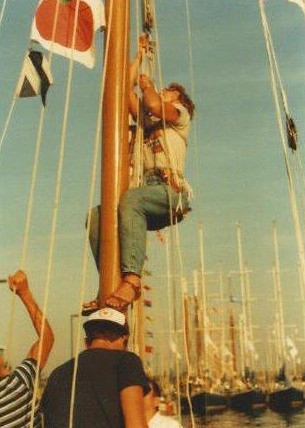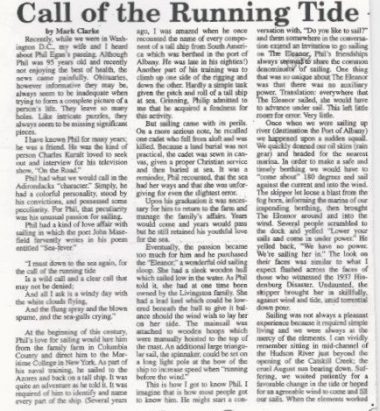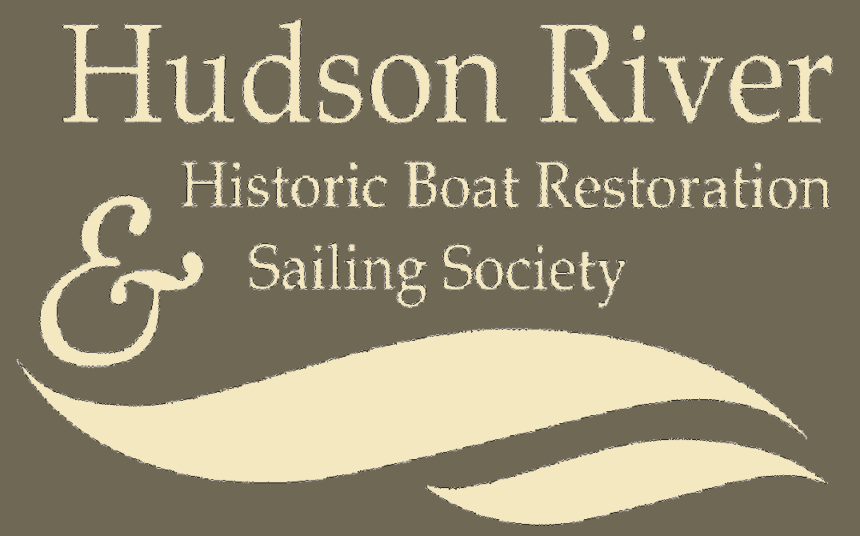Do you remember Hurricane Floyd?
He passed through the Catskill/Hudson area in September 1999 and caused over
16 million dollars worth of damage in New York alone. The letter below, one of many
written by Louise Bliss to family members, the children of Eleanor’s third captain
Phillip S. Egan, updates them on the journey and expenses generated by Eleanor on
her solo adventure.
There is so little online about Floyd and its effects on the Hudson Valley. If you
have photos, articles, links, or horror stories about sailboat disasters during this
storm, please send them to us in our comments section.
**************
December 3, 1999
Dear Eleanor Owners,
I was feeling that I was late in writing this letter to you, but I see in the files a letter written to all of you on Dec. 3 last year. Interesting is it not, that we are creatures of habit? The pull of the moon and the rise and fall of the tide.
 A busy year for Eleanor. She enjoyed several excellent sails with crew on board, and one sail she decided to go it alone, and a fine job she did. Tired of navigating the river by herself (right in the middle of the channel), she chose the north side of Germantown Landing to end her journey. Not on the rocks, not in the mud, but on nice hard ground. People up and down the river had been on the look out for her and called in her location to Joe Kenneally who I called as soon as I saw from Cesternino’s(1) that she was gone. Horrible!! Horrible! What a terrible thing to experience!! Joe Kenneally, Dean Fisher and I made a trip by boat down the river from the Hudson Power Boat Club to ascertain the damage, if any, and to make certain she would be all right until the change in tide, at which time we could pull her, or float her off the hard ground. Julie, Frank, Joe and I returned that evening to her location, and pulled her off with the help of Jerry from the Power Club in his boat. He even put on a high speed power prop for the job. We pulled her North to the Greendale Landing area and anchored her there for the night. The next morning I returned to Catskill and commandeered three muscle men in a good boat to go over to Greendale and tow her back to Cesternino’s
A busy year for Eleanor. She enjoyed several excellent sails with crew on board, and one sail she decided to go it alone, and a fine job she did. Tired of navigating the river by herself (right in the middle of the channel), she chose the north side of Germantown Landing to end her journey. Not on the rocks, not in the mud, but on nice hard ground. People up and down the river had been on the look out for her and called in her location to Joe Kenneally who I called as soon as I saw from Cesternino’s(1) that she was gone. Horrible!! Horrible! What a terrible thing to experience!! Joe Kenneally, Dean Fisher and I made a trip by boat down the river from the Hudson Power Boat Club to ascertain the damage, if any, and to make certain she would be all right until the change in tide, at which time we could pull her, or float her off the hard ground. Julie, Frank, Joe and I returned that evening to her location, and pulled her off with the help of Jerry from the Power Club in his boat. He even put on a high speed power prop for the job. We pulled her North to the Greendale Landing area and anchored her there for the night. The next morning I returned to Catskill and commandeered three muscle men in a good boat to go over to Greendale and tow her back to Cesternino’s

Samson post
In retrospect, of course, if she had been anchored out at Greendale, all this would have been avoided, but we would have had to leave early on in the afternoon to avoid a run on flood tides. Frank and I checked the lines the evening of the flood and agreed that she would be all right. Little did we, or anyone else know what was to come. She would have been alright had not some powerful dock or boat rammed her, pulling off the cleats, separating the iron rings on the samson post, and actually bending the brass hardware on the standing back stays. The damage to the combing around the cockpit occurred when she hit ground and the boom chock dropped out) later to be recovered by Julie and Joe on the rocks along the shore) which caused the boom to crash down on the combing All in all, it was a stressful time. Thanks to Julie and Frank, Joe, Jerry , Dean, and the three muscle men.
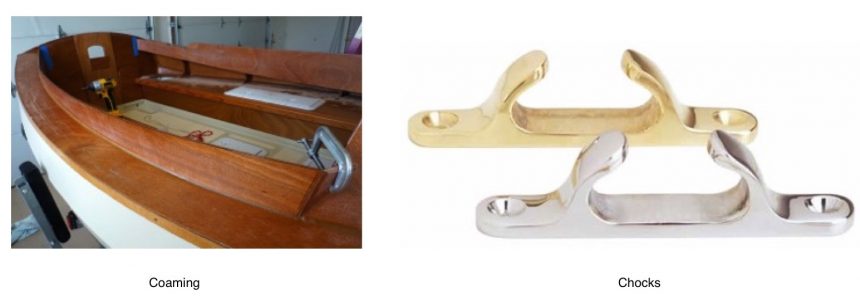 With the help of Mike at Riverview and Jack at Riverview we have a Mr. Glen Neil(4) from Catskill who has agreed to repair the Eleanor. He is very selective in the work he chooses to do, and we are fortunate to have him as our ship’s carpenter. He has watched the Eleanor over the years, and visited with Pop in the spring when Pop would work on the Eleanor, and hs is an old time wooden boat builder.
With the help of Mike at Riverview and Jack at Riverview we have a Mr. Glen Neil(4) from Catskill who has agreed to repair the Eleanor. He is very selective in the work he chooses to do, and we are fortunate to have him as our ship’s carpenter. He has watched the Eleanor over the years, and visited with Pop in the spring when Pop would work on the Eleanor, and hs is an old time wooden boat builder.
He has the o.k. from Mike to work in the yard which is another consideration He is now, after two visits to the Eleanor, in the process of compiling an estimate for the insurance company. We can only take the “wait and see approach.”
On Thanksgiving Day in the morning, Mike, Robert, Frank and Joe covered up the Eleanor. I went over yesterday, and everything looks just fine and snug. Thanks to you all for doing that big job. Of course she has to be checked often to be sure the covers do not blow away, so if you go that way, stop and make a check.
I am enclosing a copy of the statement from Mike for the hauling and blocking. Also, a copy of the check to pay the bill is enclosed. The original figure back in the fall that I sent you was $1008. The present bill is for $1123.20. Or a difference of $115.20. I do not know what I left out, but it is o.k. Phyllis, Mike, Frank and Julie each paid the $114 due from each owner. We are very fortunate that Beth and Bob are holding their interest in the Eleanor for one more year.
Mom has contributed a great deal through out the year too. She continues to pay the insurance premium, and she put the Honda in running order. I used the Honda a lot last spring, and in the fall to haul the canvasses over to Catskill.
During Arts Walk in Hudson Joe found an anchor in one of the stores which he purchased as a gift for the Eleanor. It is a big sea anchor, and replaces the deck anchor which was los in the flood. Joe is a member of the Hudson Power Boat Assoc. and has been a power boater for many years. He understands the river and its habits. He was a good friend to Pop, and now to us.
And now, I am off to pay the bill and to put these letters in the mail.
**********
(1) Mr. Cesternino was the owner of the string of docks that lined the south side of the Catskill Creek for a number of years. While the Eleanor was docked there, he kindly kept an eye on her.
(2) coaming – a vertical surface on a ship designed to deflect or prevent entry of water. It usually refers to a raised section of deck plating around an opening, such as a hatch.
(3) chock – A fitting through which anchor or mooring lines are led. Usually U-shaped to reduce chaf.
(4) Glen Neil was working independently at the time when he repaired the planking on Eleanor.
Nat is a Master sailmaker, rigger and sail designer based in East Boothbay, Maine. He is most well known for building sails for large traditional sailing vessels in the United States and abroad. Nat is very excited about designing and building sails for Eleanor as sailboat Eleanor is being restored rather than being replicated. To build the sails for Eleanor, a historical vessel on the New York State and National Registers, is an honor and a privilege. We are pleased to have Nat Wilson and Suzanne Leahy, our spar builder, join in the restoration of Eleanor.
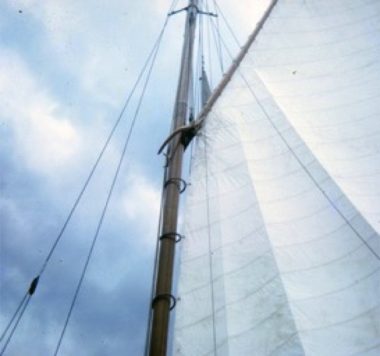
Main Sail & Rigging — 1998
Bliss has been working with Wilson since 2014 on the sail rig which includes, sails, spars, and rigging. Much research was completed by Leahy, Wilson, and Bliss which has been very challenging as there are no plans in existence about the sail rig of Eleanor. Final details and planning are still to be completed and we must raise the funds to Raise the Sails.
Ships that have sails and/or rigging built by Wilson include the U.S.S. Constitution, USC Eagle, Spirit of Massachusetts, American Eagle, and Mayflower 11.
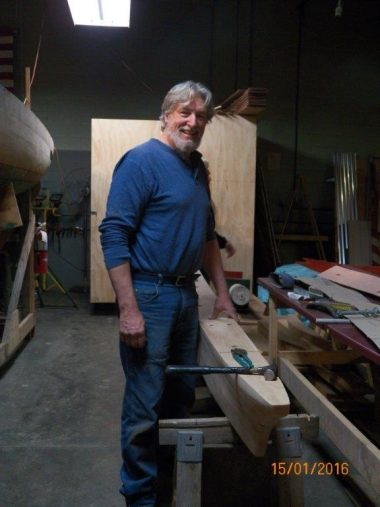 William Burrows, four year member and volunteer, stands beside the new deadwood for Eleanor. The construction of the deadwood, designed after the 1903 deadwood, was engineered by Burrows and took several months to make. The new deadwood is constructed of four slabs of White Oak. The original cuts were done with a chain saw, roughly shaped, laminated together and then carefully cut and finally shaped by sanding to have the same lines as the original. Deadwood is the part of the boat that fits between the original 2000 lb. lead keel and the new keelson which was also engineered and made by volunteers with Burrows being the lead volunteer. In 2015 the volunteers at the side dedicated 514 and one-half hours to the project.
William Burrows, four year member and volunteer, stands beside the new deadwood for Eleanor. The construction of the deadwood, designed after the 1903 deadwood, was engineered by Burrows and took several months to make. The new deadwood is constructed of four slabs of White Oak. The original cuts were done with a chain saw, roughly shaped, laminated together and then carefully cut and finally shaped by sanding to have the same lines as the original. Deadwood is the part of the boat that fits between the original 2000 lb. lead keel and the new keelson which was also engineered and made by volunteers with Burrows being the lead volunteer. In 2015 the volunteers at the side dedicated 514 and one-half hours to the project.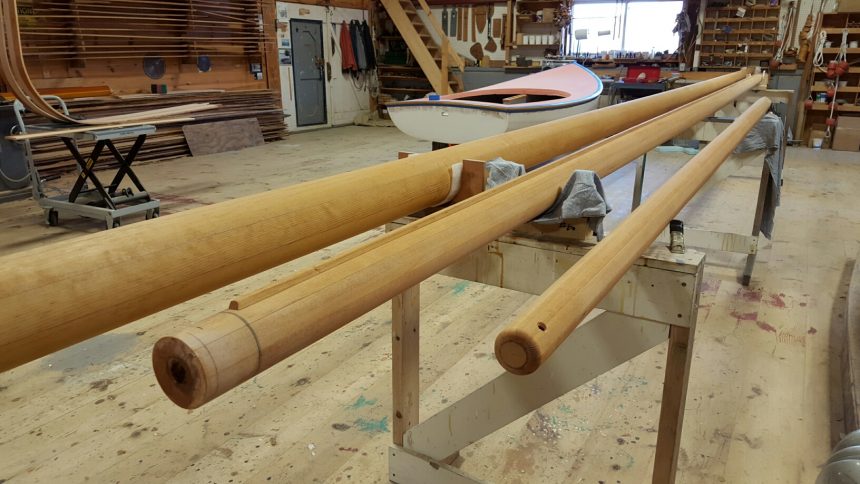
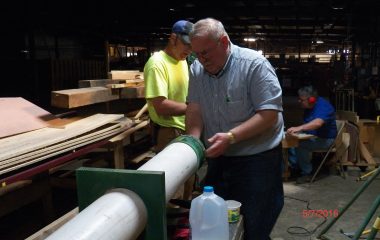
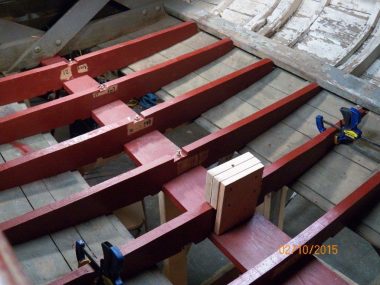
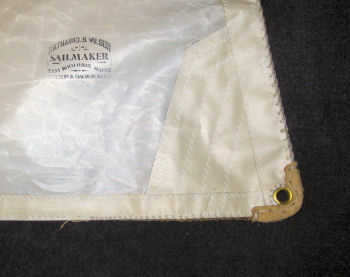 We worked with Nat Wilson, Master sailmaker from East Boothbay Harbor, Maine on the design of the sails. Eleanor will join a long list of boats and ships that have Wilson sails and rigging, including the U.S.S. Constitution, Clearwater, and Mayflower II. We had no drawings and Nat worked closely with our members who had sailed Eleanor and were familiar with her sails and how she maneuvered, and with Beetle Boat, so that the sails and the spars will work together and will perform as in the past. We anticipate that this next major expense will be about $6000, and 2016 fundraising will be to “Raise the Sails!”
We worked with Nat Wilson, Master sailmaker from East Boothbay Harbor, Maine on the design of the sails. Eleanor will join a long list of boats and ships that have Wilson sails and rigging, including the U.S.S. Constitution, Clearwater, and Mayflower II. We had no drawings and Nat worked closely with our members who had sailed Eleanor and were familiar with her sails and how she maneuvered, and with Beetle Boat, so that the sails and the spars will work together and will perform as in the past. We anticipate that this next major expense will be about $6000, and 2016 fundraising will be to “Raise the Sails!”